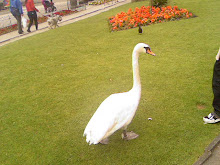Throughout different periods of history, Jerash has been occupied by the Greeks, Persian, Romans, Byzantine Christians and finally Muslims, but the most significantly visible influence on the city is that of the Roman occupation. And that is evident from the moment you enter the city through Hadrian's gate which was especially constructed for the Roman Emperor Hadrian's visit to this city sometime in the second century AD.
After passing through the gate, the first structure one comes across is the massive Hippodrome. All Roman cities had hippodromes for chariot races and other kinds of sports. Chariot racing was an essential part of Roman life and they took this sport with them pretty much everywhere they went and Jerash is no exception.
Like all Roman cities, Jerash was also constructed according to Roman standards and has several common features with other Roman cities. Some of these features were:
Central Plaza
The oval plaza with a sacrificial alter in the centre. It was probably the Greeks who initially built the original plaza but it was much smaller than the current one. When the Romans came they moved the circle outwards and added more columns. Why? because Romans liked things bigger and better.
Colonnaded street
The colonnaded street is called the Cardo Maximus. The Romans were not just conquerors, they were also master builders of the ancient world. From roads to aqueducts, from bridges to baths, from arenas to temples, everything was built to perfection. The drains of Jerash run under the Cardo Maximus. So if you pour water over the road it goes down discreet little holes and disappears, leaving the area dry. It is a shame that many of our roads in this time and age turn into canals if it happens to rain a bit too heavily. Our road builders need to learn some things from these ancient Romans.
The Souq
The old market area had a central fountain and shops were build around this area in circular fashion. Shops ranged from those of cloth merchants, butchers and others selling items of daily requirement.
 Last but not least the "Temples". Romans were nothing if not religious.
Last but not least the "Temples". Romans were nothing if not religious.Although Zeus is the principal deity but the main goddess of Jerash was Artemis. Women from all over came to the temple of Artemis to pray. Why? because in addition to being the goddess of hunting and wildlife Artemis is also the goddess of fertility and childbirth.
The stairs that lead to the Temple of Artemis are the original 1800 year old ones and appear to be leading towards the heaven. They were purposely built that way to impress upon people the heavenly status of Artemis. They are built in sets of seven. After every seven steps there is a bit of flat area and then another set of seven steps and so on. There a a total of seven sets of seven steps each, leading to the temple. Since the temple is built not directly at the top but a little way way back , it does not come into view until you have reached at least the fifth set of steps.
 Roman cities are usually built to impress and this one fits the bill perfectly. Even in its semi ruined state its grandeur, architecture and design leaves one in awe. Mind you, the city was for Romans who were occupying this land. All non Romans, including the local population lived outside the walls of the city in their humble abodes. Bet that didn't go well with the local populace but as the Romans were the conquerors / rulers , there was little that the locals could do about it.
Roman cities are usually built to impress and this one fits the bill perfectly. Even in its semi ruined state its grandeur, architecture and design leaves one in awe. Mind you, the city was for Romans who were occupying this land. All non Romans, including the local population lived outside the walls of the city in their humble abodes. Bet that didn't go well with the local populace but as the Romans were the conquerors / rulers , there was little that the locals could do about it.The entrance ticket to Jerash costs about 10 JOD and a guided tour in English another 30 JOD. If one is familiar with the layout of ancient Roman cities, one can skip the guided tour. Free Visitor's guides are also available in the museum located just out side the entrance of the ancient city. Those and a bit of pre-visit internet research should be enough to set one up for a day's casual visit to the ancient city of Jerash.









No comments:
Post a Comment